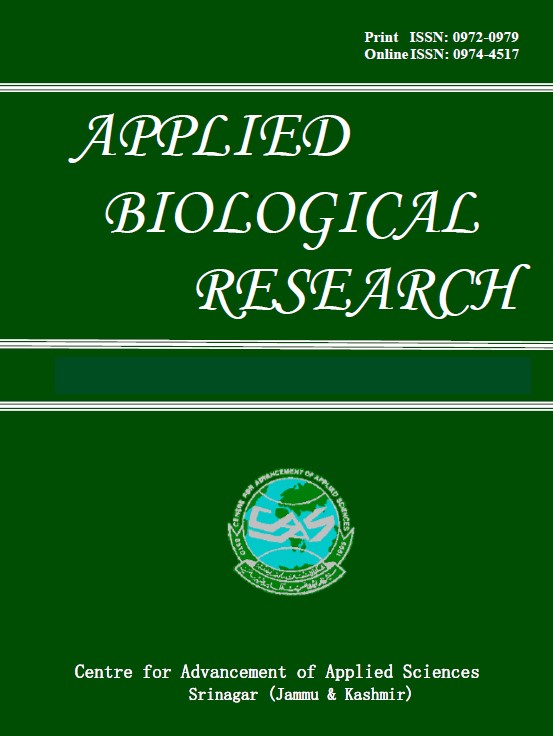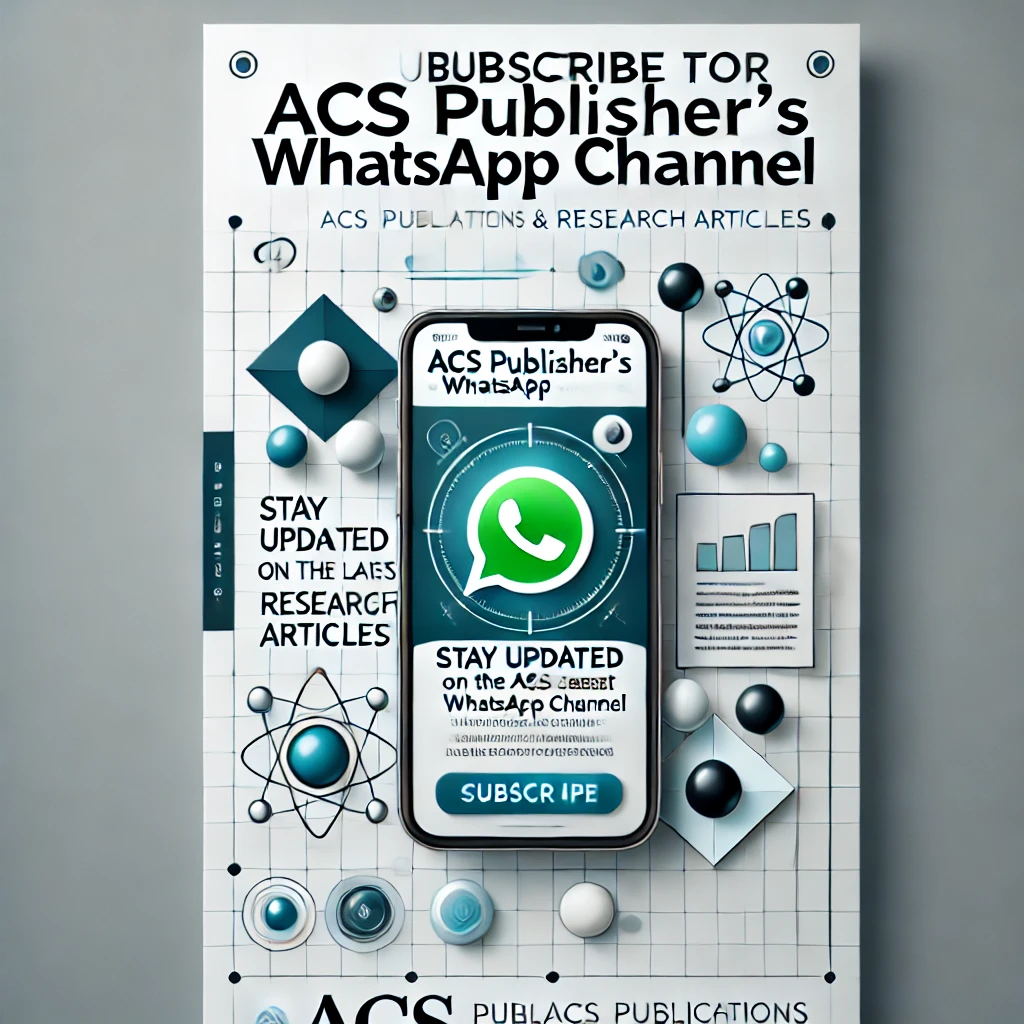THERAPEUTIC POTENTIALS OF Garcinia cambogia (L.) Roxb.: PHYTO- CHEMICAL CHARACTERIZATION AND BIOLOGICAL ACTIVITIES
DOI:
https://doi.org/10.48165/abr.2025.27.01.3Keywords:
Bioactive compounds, Garcinia cambogia, hydro-alcoholic extract, phytochemical profiling, therapeutic potentialAbstract
Garcinia cambogia, traditionally utilized for its medicinal properties, has garnered scientific interest for its potential health benefits. This study aimed to bridge the gap between traditional use and scientific validation by characterizing the phytochemical composition of G. cambogia hydro-alcoholic fruit extract and evaluating its antioxidant, anti-inflammatory, and antidiabetic properties.Phytochemical analyses identified numerous bioactive compounds within the fruit extract. The extract exhibited high total phenolic and flavonoid content, indicative of its potent antioxidant capacity. In antioxidant assays, the extract demonstrated significant activity, outperforming standard references. Enzyme inhibition assays revealed notable α-amylase and α-glucosidase inhibitory activities, suggesting its antidiabetic potential. Furthermore, in an in vivo model, the extract significantly reduced inflammation, comparable to standard anti-inflammatory drugs.These findings support the therapeutic potential of G. cambogia in managing oxidative stress, inflammation, and diabetes, providing a scientific basis for its traditional medicinal use.Downloads
References
Aati, H.Y., Ismail, A., Rateb, M.E., AboulMagd, A.M., Hassan, H.M. and Hetta, M.H. 2022. Garcinia cambogia phenolics as potent anti-Covid-19 agents: Phytochemical profiling, biological activities andmolecular docking. Plants, 11(19): 2521 [https://doi.org/10.3390/plants11192521].
Abdelkhalek, S.T., Jin, S., Jin, M., Abdelgayed, S.S. and Wang, M. 2024. Classification of phytochemicals in plants with herbal value. Springer Nature, 1-39. [https://doi.org/10.1007/978- 3-031-21973-3_12-2].
Phytochemicals and bioactivities of Garcinia cambogia 35
Agri, B.K., Verma, P.P.S., Tiwari, A.K., Singh, S., Kumar, D. and Padalia, R.C. 2024. Utility and conservation of medicinal and aromatic plants in India. Futuristic Trends in Agriculture Engineering and Food Sciences, 3(16): 39-53.
Alhakamy, N.A., Mohamed, G.A., Fahmy, U.A., Eid, B.G., Ahmed, O.A.A., Al-Rabia, M.W., et al., 2022. New alpha-amylase inhibitory metabolites from pericarps of Garcinia mangostana. Reproductive and Developmental Biology, 12(3): 384 [https://doi.org/10.3390/life12030384].
Artanti, N., Dewijanti, I.D., Muzdalifah, D., Windarsih, A., Suratno, S. and Handayani, S. 2023. Alpha-glucosidase inhibitory activity of the combination of Caesalpinia sappan L. and Garcinia mangostana extract. Journal of Applied Pharmaceutical Science, 13(5): 189-198.
Bonesso dos Reis, S., de Oliveira, C.C., Acedo, S.C., da Conceição Miranda, D.D., Ribeiro, M.L., Pedrazzoli, J. and Gambero, A. 2009. Attenuation of colitis injury in rats using Garcinia cambogia extract. Phytotherapy Research, 23(3): 324-329.
Carrillo-Martinez, J.E., Flores-Hernández, F.Y., Salazar-Montes, A.M., Nario-Chaidez, H.F. and Hernández-Ortega, L.D. 2024. Quercetin, a flavonoid with great pharmacological capacity. Molecules, 29(5): 1000. [https://doi.org/10.3390/molecules29051000].
Chantree, P., Martviset, P., Thongsepee, N., Sangpairoj, K. and Sornchuer, P. 2023. Anti inflammatory effect of garcinol extracted from Garcinia dulcis via modulating NF-κB signaling pathway. Nutrients, 15(3): 575. [https://doi.org/10.3390/nu15030575].
El-Mesallamy, A., Alahwany, A., El-zaidy, M. and Hussein, S. 2024. Demonstration of phenolics content from Garcinia cambogia extract and evaluation of its cytotoxic activity. Bulletin of Faculty of Science, Zagazig University, 2024(3): 156-162.
Han, J.H., Park, M.H. and Myung, C.S. 2021. Garcinia cambogia ameliorates non-alcoholic fatty liver disease by inhibiting oxidative stress-mediated steatosis and apoptosis through NRF2-ARE activation. Antioxidants, 10(8): 1226. [https://doi.org/10.3390/antiox10081226].
Han, N., Park, H.J., Ko, S.G. and Moon, P.D. 2024. Stigmasterol exerts an anti-melanoma property through down-regulation of reactive oxygen species and programmed cell death ligand 1 in melanoma cells. Antioxidants, 13(3): 380. [https://doi.org/10.3390/antiox13030380].
Happi, M.A.N., Djoko, E. and Ngandeu, S.M. 2022. Evaluation of the anti-inflammatory activity of Garcinia kola capsules on gonarthrosis and low back pain. International Journal of Biological and Pharmaceutical Sciences, 3(1): 25. [https://doi.org/10.53771/ijbpsa.2022.3.1.0025].
Harborne, J.B. 1973. Phytochemical Methods. Chapman and Hall Ltd., London, UK. Jamal, P., Akbar, I., Jaswir, I., Zuhanis, Y. and Hashim, H.Y. 2017. Quantification of total phenolic compounds in papaya fruit peel. Pertanika Journal of Tropical Agricultural Science, 40: 87-98. Jantan, I., Jumuddin, F.A., Saputri, C.S. and Rahman, K. 2011. Inhibitory effects of the extracts of Garcinia species on human low-density lipoprotein peroxidation and platelet aggregation in relation to their total phenolic contents. Journal of Medicinal Plants Research, 5(13): 2699-2709. Joseph, M.K. and Thangavel, I. 2023. GC-MS/HPTLC analysis, antioxidant, anti-inflammatory, and antimicrobial efficacy of Garcinia cambogia. Free Radicals and Antioxidants, 13(1): 10-20. Karim, N., Chanudom, L. and Tangpong, J. 2018. Cytoprotective and anti-genotoxic effects of xanthone derivatives from Garcinia mangostana against H₂O₂ induced PBMC cell and blood leukocytes damage of normal and type 2 diabetes volunteers. Walailak Journal of Science and Technology, 16(3): 143-153.
Khojali, I.O. and Mohammed, M.Y. 2023. Bisabolene compound extracted from Cassia fistula and docked as antioxidant and vitamin E alternative predicted drug design. GSC Advanced Research and Reviews, 15(1): 69-75.
Kruttika, J., Deshpande, K.M., Rebello, S.J., Manikantan, P., Chaudhary, A., Alagesan, K.P., et al., 2023. Phytochemicals as weapons against drug resistance. Plant Science Today, 10(sp2): 212- 219.
Kumar, S., Srivastava, P., Mujwar, S. and Gupta, S. 2023. The anti-inflammatory and anti-arthriti activity of Garcinia travancorica in a rat model: A proof of concept with computational studies.
36 H.R. Ranganatha Yadav et al.
Combinatorial Chemistry & High Throughput Screening, 26e120623217888. [https://doi.org/10.2174/1386207326666230612121712].
Machinaga, N., Chiba, J., Hashimoto, R., Otoyo, M. and Inoue, R. 2012. Phosphoric acid ester derivative. US patent no. JPS62103097
Motulsky, H. 2018. GraphPad Prism User Guide. GraphPad Software Inc., San Diego, CA, USA. Nchiozem-Ngnitedem, V.A., Mukavi, J., Omosa, L.K. and Kuete, V. 2023. Phytochemistry and antibacterial potential of the genus Garcinia. Advances in Botanical Research, 107: 105-175. Noreen, S., Khan, M.N., Tufail, T., Hassan, F. and Awuchi, C.G. 2023. Nutraceutical, functional, and therapeutic properties of Garcinia cambogia: A review. International Journal of Food Properties, 26(1): 729-738.
Perveen, S., Kanwal, S., Ali, S., Alqahtani, F., Rao, F., Asghar, A., et al., 2024. Role of phytochemicals in management of schizophrenia. p. 101. In: New Approaches to the Management and Diagnosis of Schizophrenia. Intechopen, London, UK. [https://doi.org/10.5772/intechopen.1004847].
Prashanth, B.G. and Kachole, M.S. 2011. Effect of exogenous hydrogen peroxide on peroxidase and polyphenol oxidase activities in Cajanus cajan (L.) Millsp. detached leaves. International Journal of Current Research, 3(10): 61-65.
Priyadharisini, J. 2019. Preliminary phytochemical screening and gas chromatography and mass spectrometry analysis of chloroform extract of Garcinia cambogia fruits. Asian Journal of Pharmaceutical and Clinical Research, 12(7): 176-178.
Rizikiyan, Y., Sulastri, L., Indriaty, S., Khofifah, Y. and Falya, Y. 2022. Formulasi dan uji aktivitas antioksidan lotion ekstrak etanol kulit buah manggis (Garcinia mangostana L.) dengan metode DPPH (2,2-difenyl-1-pikrylhidrazyl). Medical Science: Scientific Journal of Pharmacy, 7(2): 147-160.
Ruch, R.J., Cheng, S.J. and Klaunig, J.E. 1989. Prevention of cytotoxicity and inhibition of intracellular communication by antioxidant catechins isolated from Chinese green tea. Carcinogenesis, 10: 1003-1008.
Sahoo, S., Sinha, S. and Singh, A. 2022. Molecular docking study reveals α-santalol from Santalum album Linn. as a promising inhibitor of CD36 for atherosclerosis. Cardiometry, 24: 353-359. Sharma, K., Adhikari, D., Kim, H.J., Oh, S.H., Oak, M.H. and Yi, E. 2019. Citrus junos fruit extract facilitates anti-adipogenic activity of Garcinia cambogia extract in 3T3-L1 adipocytes by reducing oxidative stress. Journal of Nanoscience and Nanotechnology, 19(2): 915-921. Shetty, P., Rai, M., Ravindran, A., Gopalakrishna, H.N., Pai, V.R. and Kalal, B.S. 2022. Hypoglycemic and hypolipidemic effects of Garcinia cambogia extracts in streptozotocin nicotinamide induced diabetic rat model. International Journal of Clinical and Experimental Pathology, 15(9): 380-387.
Silprasit, K. 2022. Analysis of FTIR spectra, flavonoid content, and anti-tyrosinase activity of extracts and lotion from Garcinia schomburgkiana by multivariate method. Trends in Sciences, 19(18): 5780. [https://doi.org/10.48048/tis.2022.5780].
Singh, T., Kasture, S.B., Jaliwala, Y. and Singh, M. 2011. In vitro antioxidative activity of phenolic and flavonoid compounds extracted from of Garcinia indica. International Journal of Pharmacy & Life Sciences, 2(3): 613-616.
Singleton, V.L., Orthofer, R. and Lamuela-Raventós, R.M. 1999. Analysis of total phenols and other oxidation substrates and antioxidants by means of Folin-Ciocalteu reagent. Oxidants and Antioxidants Part A, 299: 152-178.
Talib, W.H., Baban, M.M., Azzam, A.O., Issa, J.J., Ali, A.Y., AlSuwais, A.K. et al., 2024. Allicin and cancer hallmarks. Molecules, 29(6): 1320. [https://doi.org/10.3390/molecules29061320]. Thandayamparambil, A.A., Manoharan, S., Balasubramanian, S. and Perumal, E. 2023. Garcinia gummi-gutta: Phytochemicals and pharmacological applications. Biofactors, 49(3): 584-599. Thummajitsakul, S. and Irulandi, K., Geetha, S., Mehalingam, P. and Nirmalkumar, N. 2016. Evaluation of antioxidant properties and antimicrobial activity of Garcinia cambogia Hort. Ex
Boerl (Clusiaceae) fruit extracts. Journal of Advanced Applied Scientific Research, 1(3): [https://doi.org/10.46947/joaasr13201621].
Trease, G.E. and Evans, W.C. 1987. Pharmacognosy (13th edn.). Brailliar Tiridel, Macmillan Publishers, UK.
Vij, I. and Pathania, A. 2023. An overview: Advances in chromatographic techniques in phytochemistry. E3S Web of Conferences, 391: 101038. [https://doi.org/10.1051/e3sconf/202339101038].
Wairata, J., Fadlan, A., Purnomo, A.S. and Ersam, T. 2023. α-amylase activities of fraction in dichloromethane extract from the stem bark of Garcinia forbesii. Nucleation and Atmospheric Aerosols, 2642: 070004. [https://doi.org/10.1063/5.0110781].
Waris, M., Koçak, E., Gonulalan, E.M., Demirezer, L.Ö., Kır, S. and Nemutlu, E. 2022. Metabolomics analysis insight into medicinal plant science. TrAC Trends in Analytical Chemistry, 157: 116795. [116795.https://doi.org/10.1016/j.trac.2022.116795].
Xu, L., Zhang, L.Z., Li, Y.H., Li, L.Y., Xie, Z.H. and Tu, Z.C. 2022. Inhibitory activity and mechanism of guavinoside B from guava fruits against α-glucosidase: Insights by spectroscopy and molecular docking analyses. Journal of Food Biochemistry, 46(7): e14101. [https://doi.org/10.1111/jfbc.14101].
Zhishen, J., Mengcheng, T. and Jianming, W. 1999. The determination of flavonoid contents in mulberry and their scavenging effects on superoxide radicals. Food Chemistry, 64(4): 555-559.

